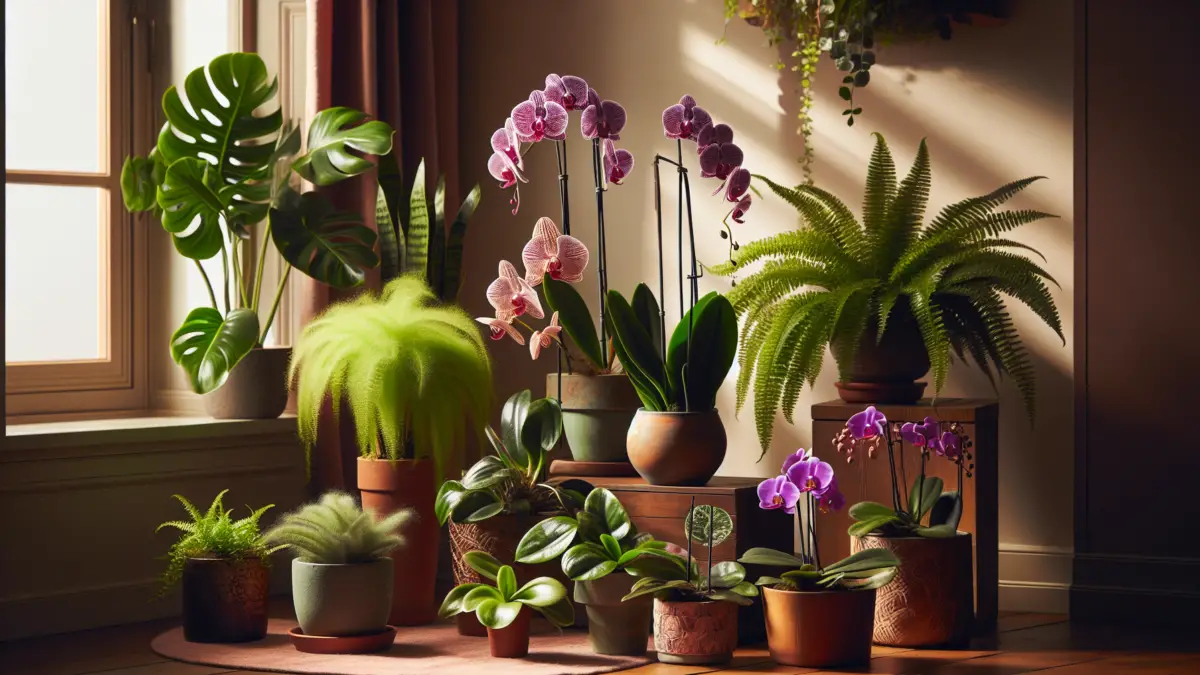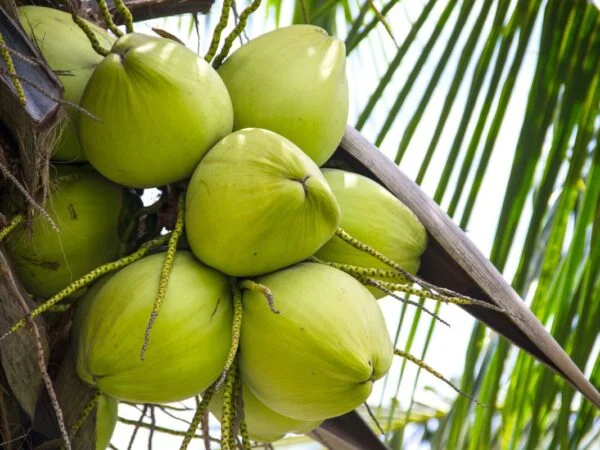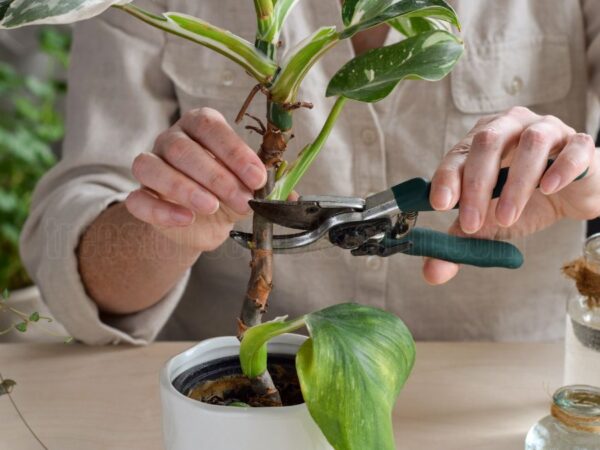Flowers for Indoor Gardening
Indoor gardening can be a delightful way to bring nature into your home. With the right plants, you can enjoy vibrant blooms all year long. Here, I'll guide you through some of the best options for colorful blooms and easy-to-grow favorites.
Colorful Blooms Year-Round
Indoor blooming plants can add splashes of color to interior spaces throughout the year. Some plants even flower during the darkest days of winter. Here are a few top picks:
- Christmas Cactus: Blooms during the winter months. Prefers bright, indirect light.
- Moth Orchid: Can bloom for months. Thrives in bright, indirect light and requires weekly watering.
- African Violets: Known for blooming several times a year. They come in a variety of colors and shapes.
| Plant | Blooming Season | Light Preference | Watering Needs |
|---|---|---|---|
| Christmas Cactus | Winter | Bright, indirect | Moderate |
| Moth Orchid | Year-Round | Bright, indirect | Weekly |
| African Violets | Several Times a Year | Bright, indirect | Moderate |
Easy-to-Grow Favorites
If you're looking for low-maintenance options, consider these easy-to-grow indoor flowering plants. They can thrive with minimal effort, making them perfect for busy lifestyles or gardening beginners.
- Peace Lily: Known for its shiny green leaves and spoon-shaped white flowers. Tolerates low to moderate light but blooms better in bright filtered light. Requires minimal care.
- African Violets: Among the easiest indoor flowering plants to grow. They bloom several times a year with little effort.
- Spider Plant: While not a traditional flowering plant, it produces small white flowers and is extremely hardy.
| Plant | Light Tolerance | Maintenance Level | Special Notes |
|---|---|---|---|
| Peace Lily | Low to moderate | Low | Better blooming in bright filtered light |
| African Violets | Bright, indirect | Low | Variety of colors and shapes |
| Spider Plant | Low to bright indirect | Very Low | Produces small white flowers |
(Better Homes & Gardens) By selecting the right plants and providing them with the appropriate care, you can enjoy a vibrant indoor garden that adds beauty and color to your home all year round.
Caring for Indoor Flowering Plants
Proper Lighting Conditions
Indoor flowering plants require the right lighting to thrive. Most indoor flowering plants are not particularly difficult to grow and can last for years, provided they receive the correct light. Ideally, bright, indirect light from an east-, west-, or south-facing window is best. If natural light is limited, artificial lighting, such as grow lights, can be used. Grow lights provide the spectrum of light that plants need for photosynthesis, making them an excellent option for spaces with limited sunlight (Leon & George).
| Plant Type | Ideal Light Condition | Alternative Lighting |
|---|---|---|
| Succulents | Bright, direct light | Grow lights |
| Tropical Plants | Bright, indirect light | Fluorescent lights |
| Flowering Houseplants | Bright, indirect light | LED grow lights |
Watering Tips and Mistakes to Avoid
Watering is a critical aspect of caring for indoor flowering plants. Overwatering is a common mistake and a leading cause of houseplant death. It's essential to check the soil moisture before watering. If the soil sticks to your finger, it's still too wet, and it's better to wait a few more days before watering (House Beautiful). Different plants require varying amounts of water based on their natural environments. Desert natives like succulents prefer less frequent waterings, while tropical plants like Monstera deliciosa or Bird's Nest Fern thrive with more frequent waterings, approximately once a week (The Sill). Additionally, the size of the plant pot affects how much water the plant needs—smaller pots with less soil dry out faster than larger pots with more soil (The Sill).
| Plant Type | Watering Frequency | Pot Size Effect |
|---|---|---|
| Succulents | Every 2-3 weeks | Smaller pots dry out faster |
| Tropical Plants | Once a week | Larger pots retain moisture longer |
| Flowering Houseplants | Every 1-2 weeks | Depends on specific plant needs |
By understanding the proper lighting conditions and watering requirements, you can ensure your indoor flowering plants remain healthy and vibrant. With the right care, your flowers plant for home will flourish, bringing beauty and life to your living space.
Pet-Friendly Blooming Plants
For those who love gardening and have pets, it's important to choose indoor flowering plants that are safe for both your home and your furry friends. Here are some lovely blooming plants that are not only beautiful but also non-toxic to pets.
Safe Choices for Pet Owners
When selecting flowers for your home, it's crucial to consider both their aesthetic appeal and their safety for pets. Here are some pet-friendly options:
Hoya Albo Carnosa
Hoya Albo Carnosa, also known as the wax plant, is a popular choice for indoor gardening. Its waxy leaves and fragrant flowers make it a delightful addition to any home. Importantly, it is non-toxic to cats and dogs.
Moth Orchid
Moth Orchids (Phalaenopsis) are elegant and easy to care for. These orchids bloom in a variety of colors and are safe for pets. They require minimal care and can thrive in indirect light.
Bromeliad
Bromeliads are known for their vibrant colors and unique shapes. They are non-toxic to pets and can add a tropical touch to your home. Bromeliads thrive in bright, indirect light and require moderate watering.
African Violet
African Violets are small, flowering plants that are safe for pets. They bloom in shades of purple, pink, and white. African Violets prefer bright, indirect light and need to be watered from the bottom to avoid leaf spots.
Holiday Cactus
Holiday Cactus, which includes Thanksgiving, Christmas, and Easter Cactus, is a pet-friendly option. These plants produce colorful blooms during the holiday seasons and are safe for cats and dogs. They prefer indirect light and moderate watering.
| Plant Name | Safe for Pets | Light Requirement | Watering Needs |
|---|---|---|---|
| Hoya Albo Carnosa | Yes | Indirect light | Moderate |
| Moth Orchid | Yes | Indirect light | Moderate |
| Bromeliad | Yes | Bright, indirect light | Moderate |
| African Violet | Yes | Bright, indirect light | Bottom watering |
| Holiday Cactus | Yes | Indirect light | Moderate |
When choosing indoor flowering plants, it's essential to avoid those that are harmful to pets. Some plants to steer clear of include Crown of Thorns, Pink Anthurium, Desert Rose, Purple Oxalis, Cyclamen, Calamondin Orange Plant, Flowering Maple, Amaryllis, Clivia, and Rex Begonia (House Beautiful). By selecting the right plants, you can create a beautiful and safe environment for both you and your pets.
Air-Purifying Indoor Plants
Indoor plants do more than just beautify your home; they also help purify the air. This section explores plants that can improve air quality and those recommended by NASA for their air-purifying abilities.
Plants for Cleaner Indoor Air
Certain houseplants are particularly effective at removing toxins from the air, making them ideal for enhancing the indoor environment.
| Plant Type | Benefits | Maintenance Level |
|---|---|---|
| Snake Plant | Removes toxins like benzene, formaldehyde, and trichloroethylene | Low |
| English Ivy | Effective against mold spores; removes common indoor toxins | Medium |
| Peace Lily | Removes mold spores and common toxins like ammonia | Medium |
| Boston Fern | Excellent for removing formaldehyde | High |
| Spider Plant | Removes carbon monoxide and xylene | Low |
Figures courtesy Filti Snake plants and English ivy are particularly notable for their low-maintenance nature. Snake plants only need watering once every two weeks and thrive in low light conditions, making them perfect for busy individuals. English ivy adapts well to any interior environment and needs to be watered generously while growing.
NASA-Recommended Air Purifiers
In the 1900s, NASA conducted a study that revealed the air-purifying benefits of certain plants. This research focused on the removal of harmful chemicals like benzene, trichloroethylene, and formaldehyde from indoor air (Filti). According to NASA's guidelines, you need two to three plants in 8 to 10-inch pots for every 100 square feet to effectively purify the air in a room. Other experts recommend adding up to ten plants per square foot for optimal air purification. Here are some NASA-recommended plants:
| Plant Type | Toxins Removed |
|---|---|
| Snake Plant | Benzene, Formaldehyde, Trichloroethylene |
| English Ivy | Benzene, Formaldehyde |
| Peace Lily | Ammonia, Benzene, Formaldehyde, Trichloroethylene |
| Boston Fern | Formaldehyde |
| Spider Plant | Carbon Monoxide, Xylene |
These plants not only enhance the aesthetic appeal of your home but also contribute to a healthier living environment by removing harmful pollutants and increasing oxygen levels to some extent. For best results, ensure a good exchange with outdoor air to further improve indoor oxygen levels.
Low-Maintenance Indoor Flowers
For those who love gardening but have limited time to care for their plants, low-maintenance indoor flowers are the perfect solution. These plants require minimal effort while still providing vibrant and beautiful blooms.
Thriving with Minimal Effort
Several flowering plants thrive with minimal care and can brighten up any indoor space. Here are some of the top choices:
- Snake Plant: Requires watering only once every two weeks and thrives in low light (Filti).
- Christmas Cactus: Thrives on neglect for most of the year, needing indirect light and allowing the soil to dry between waterings (ePlanters).
- Air Plants: Do not need soil to thrive and can be soaked every few weeks or placed in a humid environment (ePlanters).
- Cape Primroses: Tolerate low light conditions and periods of dryness, blooming up to ten months a year (ePlanters).
Choosing the Right Plants
When selecting low-maintenance indoor flowers, it's essential to consider their care requirements and the environment in which they will be placed. Here are some excellent options:
| Plant Name | Light Requirement | Watering Frequency | Special Care |
|---|---|---|---|
| Snake Plant | Low light | Every two weeks | Tolerates neglect |
| Christmas Cactus | Indirect light | Allow soil to dry between waterings | Blooms in winter |
| Air Plants | Indirect light | Soak every few weeks or humid environment | No soil needed |
| Cape Primroses | Low light | Allow soil to dry before watering | Blooms up to ten months a year |
Additional low-maintenance flowering plants include:
- Crown of Thorns
- Hoya Albo Carnosa
- Pink Anthurium
- Desert Rose
- Moth Orchid
- Bromeliad
- Purple Oxalis
- Cyclamen
- Calamondin Orange Plant
- Holiday Cactus
- Kalanchoe
- African Violet
- Peace Lily
- Flowering Maple
- Amaryllis
- Clivia
- Rex Begonia
These plants are known for their ability to flourish with minimal effort, making them ideal for busy individuals or novice gardeners. For more information on easy-to-grow, long-lasting indoor flowering plants, visit House Beautiful. By choosing the right low-maintenance indoor flowers, you can effortlessly enjoy the beauty of nature within your home.
Unique Indoor Blooms
For those looking to add a touch of uniqueness to their indoor garden, there are several unconventional flowering plants that can bring both beauty and intrigue to your home. These plants stand out with their distinctive blooms and unusual characteristics.
Unconventional Beauties
When it comes to unique indoor blooms, a few plants truly stand out due to their extraordinary appearance and fascinating features. 1. Bat Flower (Tacca chantrieri) The Bat Flower is known for its dramatic, dark purple-black blooms that resemble a bat in flight. This plant requires high humidity and indirect light, making it a striking addition to any indoor garden. 2. Lipstick Plant (Aeschynanthus radicans) The Lipstick Plant gets its name from its tubular red flowers that look like lipstick tubes. It thrives in bright, indirect light and needs regular watering to maintain its lush appearance. 3. Goldfish Plant (Nematanthus gregarius) With its bright orange, goldfish-shaped flowers, the Goldfish Plant adds a whimsical touch to your indoor space. It prefers bright light and moderate watering, making it relatively easy to care for. 4. Bird of Paradise (Strelitzia reginae) The Bird of Paradise is known for its vibrant, bird-like flowers that can brighten up any room. This plant requires a lot of sunlight and well-drained soil to flourish indoors. 5. Medinilla Magnifica The Medinilla Magnifica boasts large, chandelier-like clusters of pink flowers. It thrives in bright, indirect light and prefers a humid environment.
Care Tips for Special Plants
Caring for unique indoor flowering plants can be a bit more demanding than typical houseplants. Here are some essential tips to ensure your unconventional beauties thrive. Proper Lighting: Each of these unique plants has specific lighting needs. For example, the Bird of Paradise requires direct sunlight, while the Bat Flower prefers indirect light. It's crucial to research and provide the appropriate lighting conditions for each plant. Humidity Levels: Many unique indoor blooms, such as the Bat Flower and Medinilla Magnifica, thrive in high humidity environments. Using a humidifier or placing a tray of water near the plants can help maintain the required humidity levels. Watering Practices: Proper watering is essential for the health of these plants. Most of these unique blooms prefer evenly moist soil but be cautious not to overwater. The Lipstick Plant, for instance, needs regular watering but should never sit in waterlogged soil. Temperature Control: Maintaining consistent temperatures is important for the well-being of these plants. Avoid placing them near drafts, air conditioners, or heaters, as sudden temperature changes can stress the plants. Fertilization: Feeding your unique indoor blooms with the right type of fertilizer can promote healthy growth and vibrant flowers. Use a balanced, water-soluble fertilizer during the growing season, following the instructions on the label.
| Plant | Light Requirement | Watering Needs | Humidity Level |
|---|---|---|---|
| Bat Flower | Indirect Light | Keep Soil Moist | High |
| Lipstick Plant | Bright, Indirect Light | Regular, Well-Drained | Moderate |
| Goldfish Plant | Bright Light | Moderate | Moderate |
| Bird of Paradise | Direct Sunlight | Well-Drained Soil | Moderate |
| Medinilla Magnifica | Bright, Indirect Light | Evenly Moist Soil | High |
With the right care and attention, these unique indoor blooms can become the centerpiece of your indoor garden, providing both beauty and a conversation starter for guests.
Image Source: Paid image from CANVA




